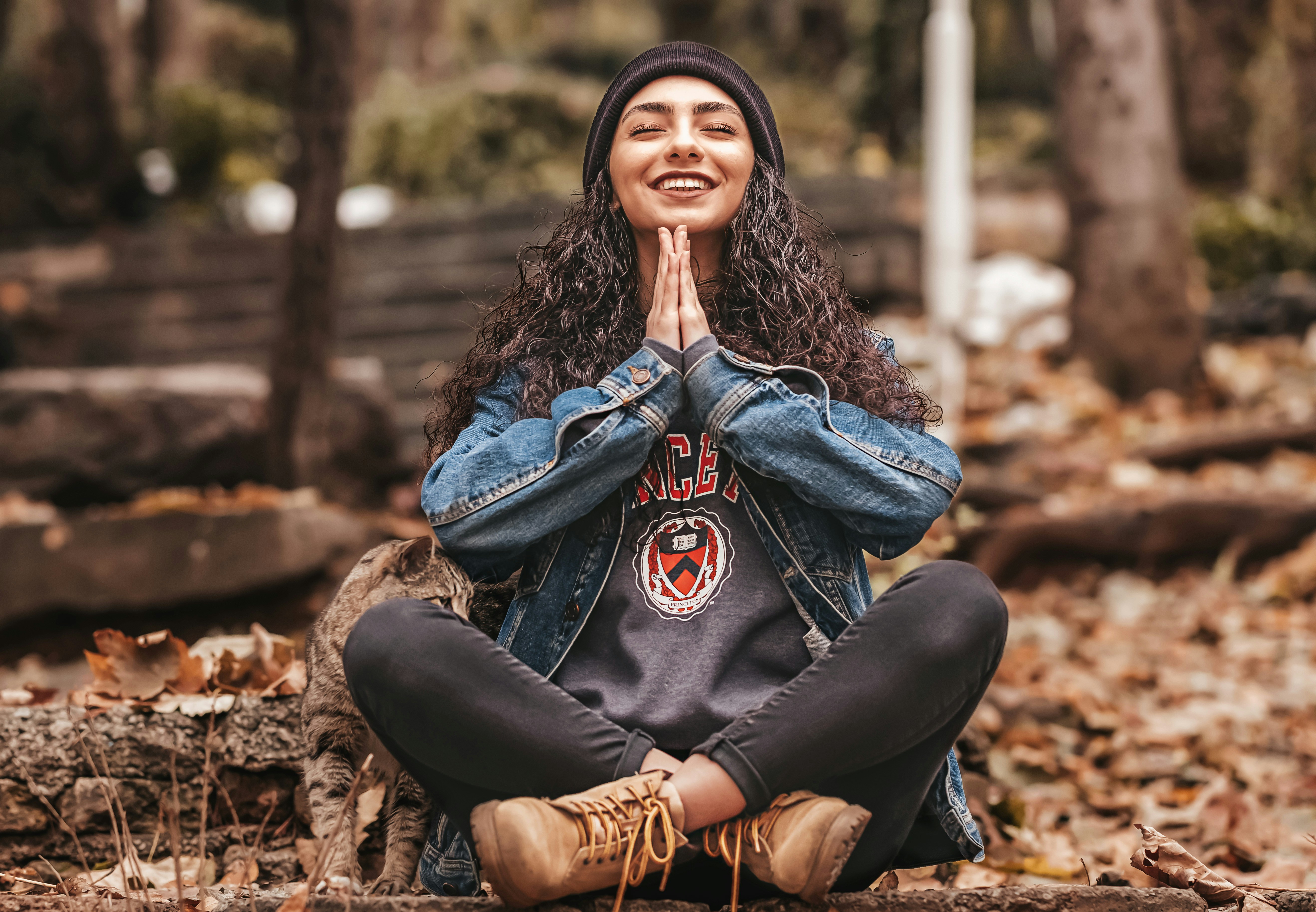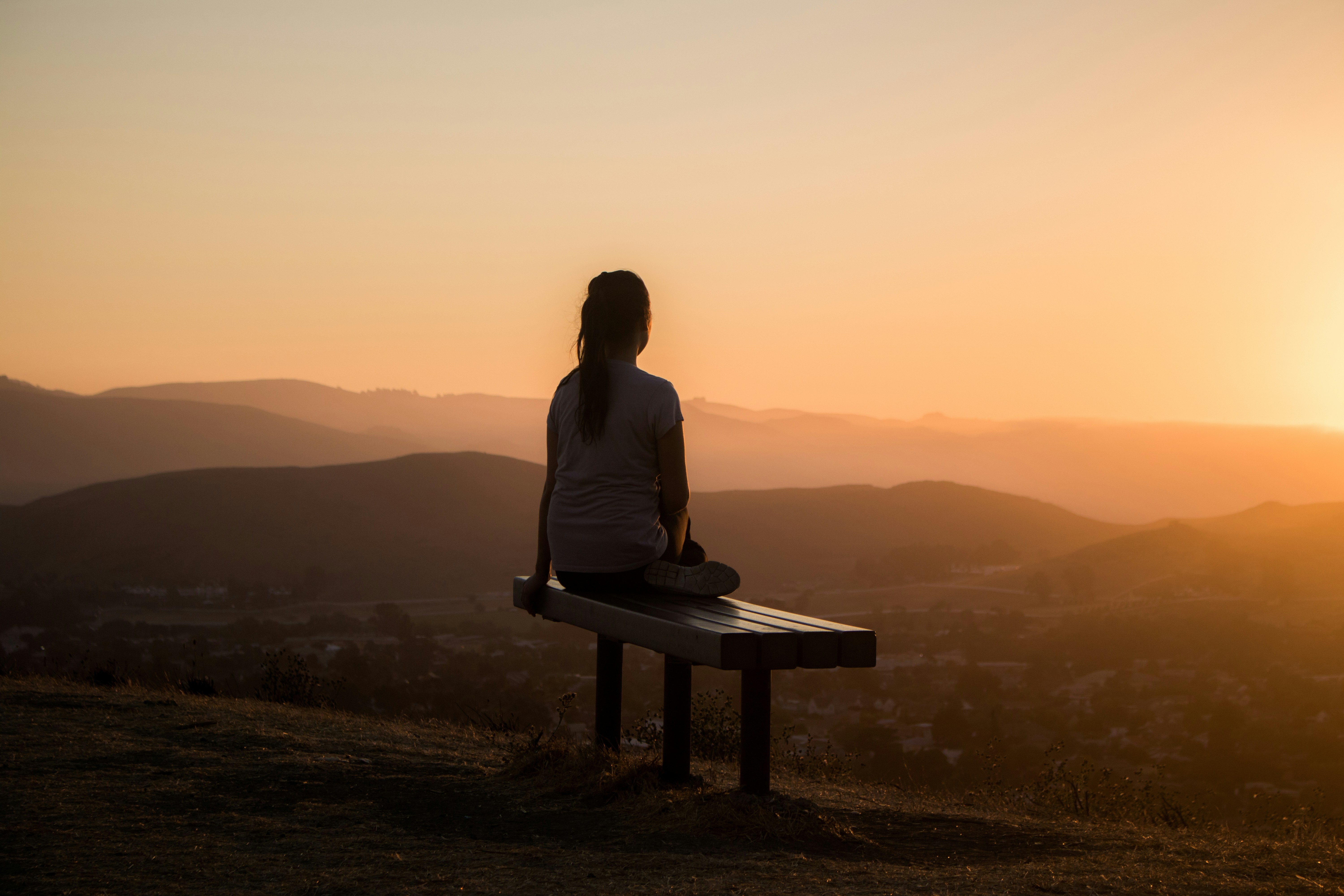
The 5 P's to Perfect Meditation
Meditate Meditate Meditate, I hear everyone talking about it but no one telling me how?! Does this sound like you? Do you find yourself nodding along when people talk about it. Or promise you’ll look into it at some point with no avail?
Well, I’ve broken the practice down into 5 simple steps to get you meditating and mellowed out in no time. (Ok, maybe not no time. But gradually…gently..lifechangingly!)

Meditation is for everyone and can truly help anyone with it’s proven benefits of nurturing your mental health, improving focus and attention and even enhancing heart and brain health. With meditation you can live a calmer, healthier life with more joy and perspective on life. If you’re looking for a technique to ground you and enhance contentment - meditation could just be the key.
Step 1: PLACE
First things first, where should I meditate?
Most importantly here is to find somewhere that evokes a sense of peace. In an ideal world we would have a room which we can dedicate to meditation and other spiritual practices (like yoga) but many of us don’t have the luxury to dedicate a whole room to it. (If you do however, this is your spot!)
A corner in a room is more than enough though. It’s best to avoid rooms that may bring other feelings, for example your office may make you stressed or your kitchen could bring the urge to cook. If you’re choosing a room, the bedroom could be best considering this is a place to rest & rejuvenate and so will generally be a calm space. Another option could be a sitting room or a little nook in a quiet hallway.

When you’ve found your space, ensure that it’s clean. Having a clean space to meditate gives you a clearer head to get into a meditative state. This goes for your house in general. We all know how much better we feel when our space is cleared of clutter and dust - it literally declutters our mind too! Think like this for your meditation space too.
Now that you’ve got a clean, quiet space you can make it feel cosy and comforting. Try adding some cushions, candles, crystals or plants. Whatever makes you feel calm and grounded.
If you’re adding candles I’d suggest avoiding candles that are scented, in particular artificially scented ones. I would also avoid incense due to the distraction the strong smell and smoky air can cause for your lungs. Breathing clear fresh air is so important for meditation.
A final point is to seek somewhere quiet for your practice. The more noisy distractions we have, the more our mind will be pulled in different directions and ultimately deter us from the Purpose of meditation (Point 4!). This may be hard if you have young kids or energetic pets or even live on a main road, but we’ll try to iron out these creases in Point 5.
Step 2: POSTURE
Ok we have our cosy little nook all set up for meditation, but how should we actually position ourselves? You may have seen spiritual gurus sitting cross legged, with perfectly horizontal spines in a mystical forest meditating. Let me be real here…the forest is very optional and probably a little impractical, really. But, styling their straight composed posture, they have a point.

The ideal posture for meditation is cross-legged with a straight spine and hands rested on the lap or knees.
If you’re into yoga, the optimal (optimal) position is in padmasana, (lotus pose) where your feet are resting on opposite hip joints, with hands in chin mudra on the knees.
But if this sounds like complete gibberish to you - it is actually very inaccessible for most people, so do not fret!
The reason for maintaining any cross legged straight spine position is to maintain the energy flow within the body. This position connects all the limbs and creates three triangles within the body shape - which will maintain the energy flow within the body.
HOWEVER, if this feels uncomfortable for you, I believe it will simply deter you from meditating altogether, which is the last thing we want.
If this posture feels too intense for you - try sitting on a cushion, putting blocks or cushions under your knees if they’re high from the ground or sit against a wall if you struggle with a straight spine.
It’s much better to start meditation feeling comfortable so that your mind isn’t constantly drawn to your aching hips or twitching knees!
There may be certain guided meditations that call for you to lie down, generally health focused meditations or yoga nidra meditation. Lying down has its place here, but generally I would avoid it in personal meditation due to the urge to fall asleep! As soon as you’re out for the count, meditation is off the cards as you hit a deep state of unconsciousness.
Meditation is a detachment from the external world and a guiding into your internal world. Asleep, you’re on a different planet altogether. So try save the 40 winks for bedtime.
Step 3: POINT
The mind is a crazy monkey set loose in a jungle! We naturally attach the mind to swinging and spiralling thoughts taking our focus away from the present moment. The goal of meditation is to clear these unwanted thoughts and focus internally on the self.
There are three types of point that we can choose -
Visual
When we are practicing meditation it’s very helpful to choose an object or symbol that resonates with us, so we can focus there instead of the thoughts. If you’re connected to a religion, the vision of your God or a religious symbol can be a powerful and resonating choice. Or, it could be as abstract as a white light or the vision of a celestial body like the sun or moon.

When you have an image that feels good, try and stick with this image for the duration of the meditation, and every meditation after. Jumping between images distracts the mind further and deters from the one-pointedness of meditation.
See the image as a safety blanket. Knowing that you can come back to this image whenever the mind wanders.
As you dip deeper into a state of meditation (likely over a long period of time) this image may dissolve altogether. But this won’t cause you any effort and instead will be a natural progression into a more transient state of awareness.
Physical
It can be beneficial to hone in on an area of your body which feels natural to your character. If you are more of an emotional person, it may feel good to focus in on the heart centre. If you are more of a logical person, opting for the 3rd eye space (inbetween the eyebrows) could feel better. But try both of these and see what resonates.

You can also choose to focus on the breath, which is my personal favourite.
Keeping your mind on the inhalation and exhalation focuses your mind on the transfer of powerful healing energy. The movement may also feel easier for you to focus on rather than a static point as described above.
As with the visual point, try not to jump between the different areas. Once you’ve chosen a spot, stick with it, minimising the choice and therefore unnecessary overthinking.
Mantra
A mantra can be a powerful thing to focus on. If you’re brand new to meditation a good start is the word ‘Om’ which is the universal sound of creation. In your mind repeat the word, elongating it to the length of one breath.
When you’re more familiar with meditation and specifically if you're interested in yoga, there are other mantras which you can choose from or can be assigned by a yogic guru. But, don’t focus on this too much. Sticking to ‘Om’ can really help to focus the mind and is a powerful mantra which encompasses the entire vocal range. Perfect!
In Japa meditation, a mantra is repeated continuously aloud. The words used for this kind of meditation are often in sanskrit, which in yoga is said to be the most divine language. Doing Japa meditation in a group can be a beautiful way of raising the energy in a space.
Begin meditating now with guided meditations:
Step 4: PURPOSE
Purpose. Kind of an important one! Meditation has a wealth of benefits, such as mental clarity, reducing stress, heightening your immune system and lowering blood pressure amongst many others.
The ultimate goal, however, is to understand the self better - that inner presence that is unique to you and which is a place of purity and connection to a higher power.

Without a purpose or any reason for doing meditation, you’re unlikely to stick to a routine.
So ask yourself - why do you want to meditate?
Is it because so-and-so on that podcast said you should?
Or is it because you’re willing to try something new to try and tackle your anxiety?
Whether it’s for health, or spiritual guidance (or both), remember this purpose when you’re thinking of putting it off. Meditation is not an easy practice by any means, so ensure you’re willing to step into this adventure and put in the reps!
Step 5: PRACTICE
Practice, practice, practice. We all know this is the way to perfect anything. By meditating once a month, or even once a week, you’re unlikely to see any real benefits.
Start with a short amount of time - 5 or 10 minutes and build on this only when you feel ready. By following steps 1-5 on a daily basis, you will start to see benefits and at some point you will feel weird not meditating!
So, start the habit, and try to stick to it.
Yogis say the best time to meditate is between 4-6am in the hours before the world wakes up.

This time is said to be closer to God and a soothing and peaceful time to meditate. But of course, this simply won’t work for many of us. Another good time is at dusk, as the moon rises and the world begins to slow down again. However, the best time really is that which suits you.
Find a time in the day that works with your schedule and try to stick to that time. By keeping the same time, we can easier form that sought after meditation habit.
If you’re still not in the mindset to meditate in silence try some //guided meditations// which are a great way of directing the mind away from the external noise.
Join me for guided meditations -
